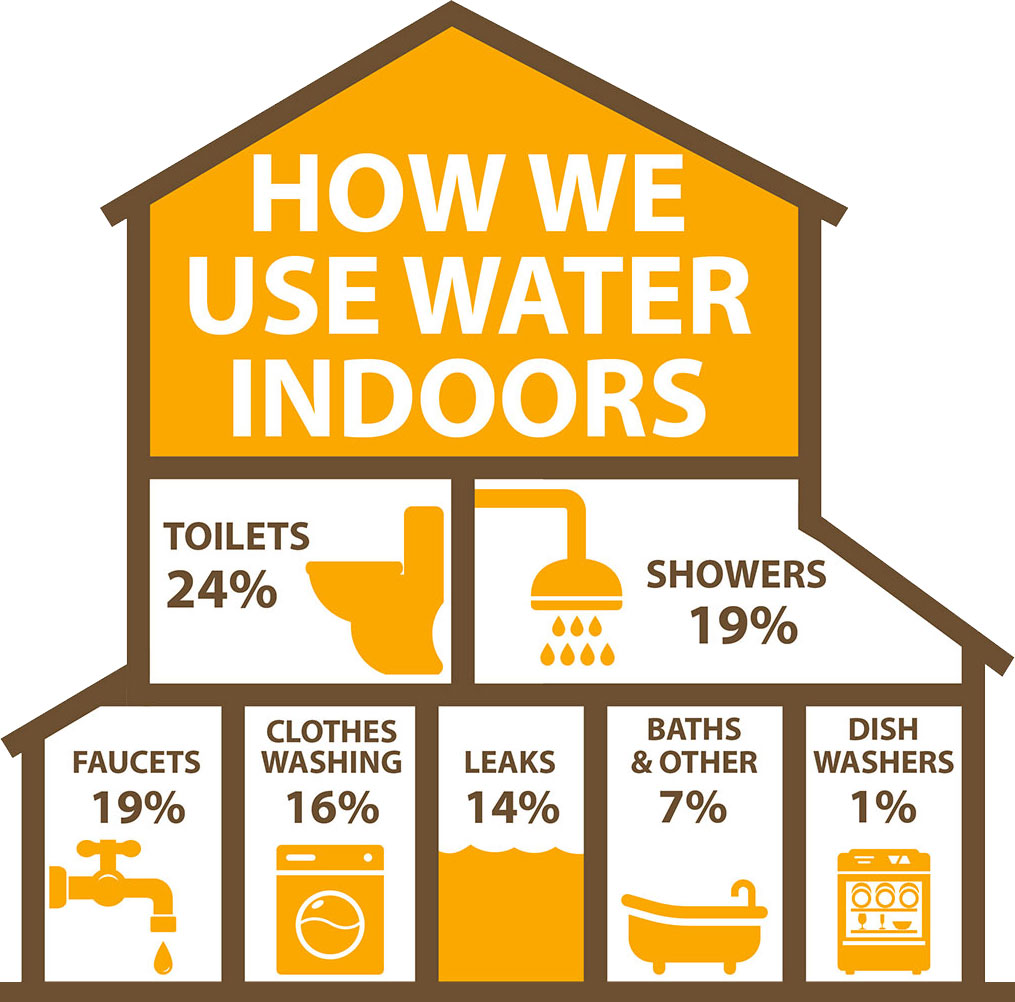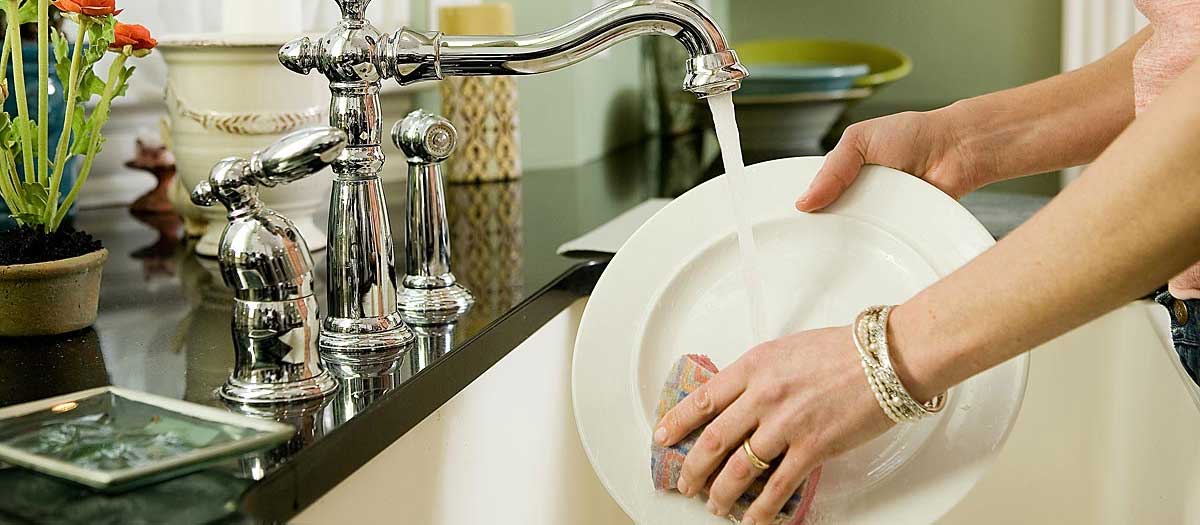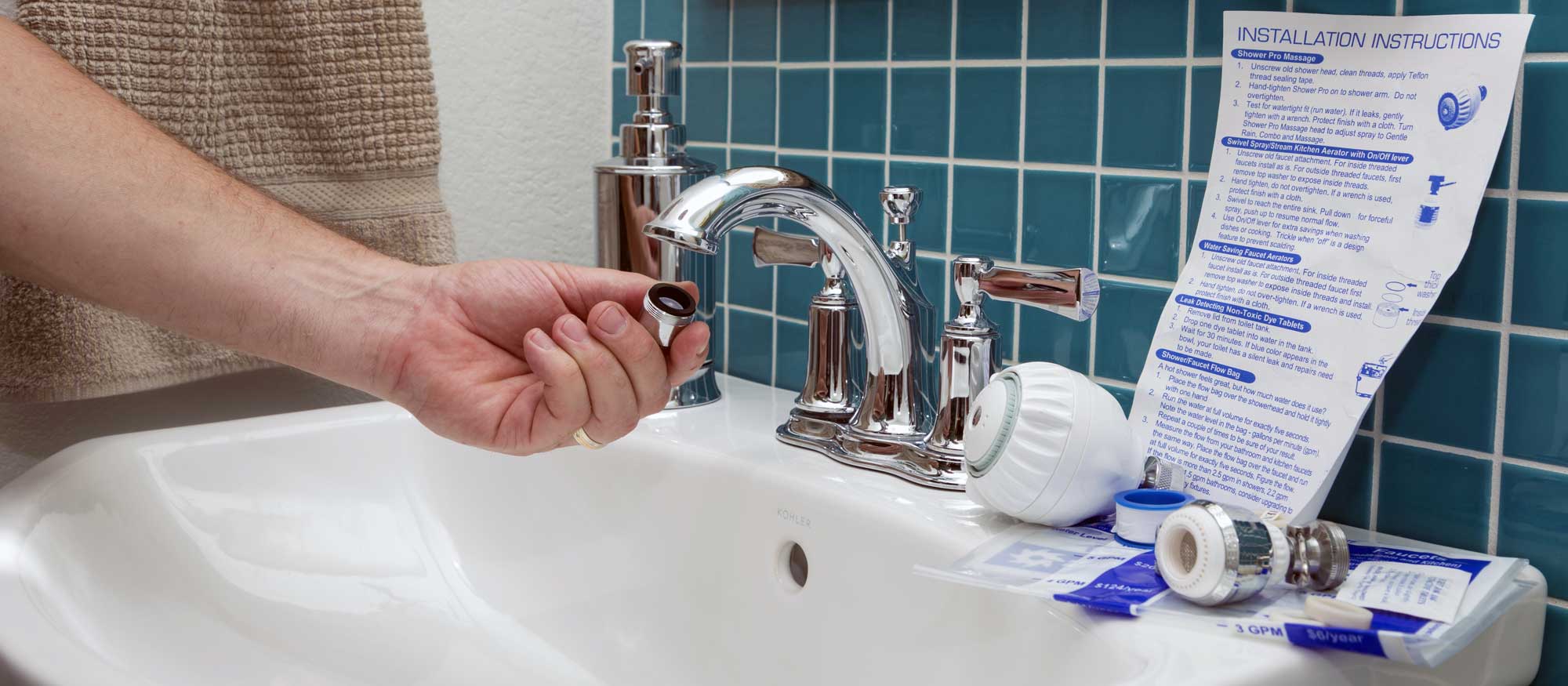Southern Nevada is in the arid Mojave Desert, which averages about four inches of rain each year. Reducing water use and water waste is crucial to long-term sustainability in the desert. Use our indoor conservation tips to help you save water in your home.

Water used INDOORS is recycled and returned to Lake Mead
The fact is, the water we use inside our homes, businesses and hotel rooms has much less impact on our community's water supply than the water used outside because water used indoors is recycled and re-used. Learn how to make a bigger impact by following mandatory watering restrictions and checking out our landscape irrigation tips.
Indoor water saving tips
Save water indoors with these tips and technology suggestions.
Appliances
While household appliances might make everyday life easier, they may not always be water efficient. Save both time and water with just a few simple tweaks to your routine:
- Only run dishwashers and washing machines when they are completely full.
- Look for the EPA's WaterSense and Energy Star labels when shopping for new appliances. High-efficiency appliances can reduce your water and energy use by as much as 50 percent.
- Adjust the water-level settings for the most efficient run.
Faucets
Installing low-flow faucet aerators can reduce the amount of water coming out of your faucet by 50 percent, saving about 2,000 gallons of water annually for two faucets. Choose aerators with a 1.5 gallon per minute (GPM) flow rate for bathrooms and 2.2 GPM for kitchen or laundry sinks.
Showers
Reduce the amount of water you use in your shower with a few simple adjustments.
- Replace any showerhead that allows a flow of more than 2.5 gallons per minute with those that have a flow rating of 2.0 to 2.5 gallons per minute.
- Limit the length of your showers to 5 minutes or less. A family of four taking daily 5-minute showers with a high-efficiency showerhead can save more than 20,000 gallons of water each year.
- Take more showers than baths. If you do take a bath, don't fill the tub all the way. In-line water heaters or re-circulating systems can save up to 30 gallons of water per day.
Toilets
Toilets consume about 24 percent of water used in the home. Increase water conservation by checking your toilets for leaks, replacing your flapper and installing a fill cycle diverter, or upgrading to a high-efficiency toilet (dual-flush, pressure-assisted, or gravity flush).
Installing an early-closure flapper can save as much as 1.5 gallons per flush. Investing in a high-efficiency toilet can save more than 4,000 gallons of water per person each year.

Water use estimator
Think you know where you use the most water in your home? Try out our water use estimator to find out for sure, and get helpful conservation tips.
Home water audit
It can be difficult to know where you're using the most water. Are you using the correct amount on your landscape? Could you have a leak? Attend a free class to learn how to perform a home water audit.
You also can use one of our free indoor water audit kits so you can test your fixtures. Call the Conservation Helpline at 702-258-SAVE or submit an online request. Kits include:
- Kitchen faucet fixture
- Bathroom sink aerators (2)
- Water flow testing bag
- Leak detection tablets
- Thread-sealing Teflon tape
- Water-efficient shower head
Note: Indoor water audit and retrofit kits are limited to one per household. Only residential customers of a Southern Nevada Water Authority member agency are eligible. Kits are not mailed out of state.
SNWA is an EPA WaterSense Program partner
The WaterSense program is a voluntary public-private partnership program sponsored by the EPA. Its mission is to protect the future of our nation's water supply by promoting and enhancing the market for water-efficient products and services.
